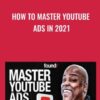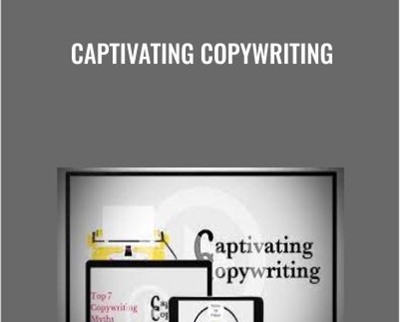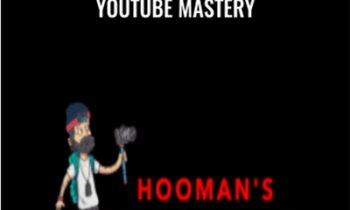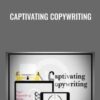$1,497.00 Original price was: $1,497.00.$143.00Current price is: $143.00.
The magic is how excited people were to read it all. How these pieces still make money today. How I’ve used each of them over and over to make 7-figures, without doing more work… Captivating Copywriting – John Romaniello
 Purchase this course you will earn 143 Points worth of $14.30
Purchase this course you will earn 143 Points worth of $14.30Elevate your skills with the Captivating Copywriting – John Romaniello course, available for just $1,497.00 Original price was: $1,497.00.$143.00Current price is: $143.00. on Utralist.com! Browse our curated selection of over 60,000 downloadable digital courses across diverse eCommerce. Benefit from expert-led, self-paced instruction and save over 80%. Start learning smarter today!
Captivating Copywriting – John Romaniello
Words. Are. Magic.
With 26 little letters, you can paint the whole fucking Universe. What would you call that, if not magic?
Today, I’m going to share some magic with you.
In a few minutes, I’m going to tell you:
- How I once generated $250,000 for my company with a selfie (7 years after it was taken)
- How a single email about olive oil made me $43,000 in a week.
- How an Instagram post about Denzel Washington and avocados landed me a book-writing contract
- and how writing a client spotlight in the form of a fairy tale brought in over $518,000 in coaching sales
Now, don’t get me wrong. Making money isn’t magic. Most decent marketers can create income on demand.
That’s not it.
The magic is how excited people were to read it all. How these pieces still make money today. How I’ve used each of them over and over to make 7-figures, without doing more work.
The magic isn’t just the money, but the magnetism: the way each of these cast its own spell that has ripples to this day.
For example: that olive oil email I mentioned?
The first time I sent it out to my mailing list, it generated over $25,000.
That was a pretty good day.
Over the last few years, I’ve sent it out in newsletters, put snippets of it on social media, even used it in some of my keynotes.
Each time, it makes money.
Here’s a look:
Now, it’s certainly not my most profitable piece of copy, but it’s one of my favorites.
I mean, we’re talking about over $160 thousand dollars generated by writing about olive oil.
In one email. Which I wrote at the gym…between sets. Over six years ago.
More importantly: to this day, people still tell me it’s one of their favorite things I’ve written.
And every time I use it, people are excited to read it, even if they don’t buy. (And many of them do.)
THAT is magic.
So, let me ask you:
Are you creating magic?
Are you casting spells with your words?
Are you dazzling your audience, your prospects, your clients with wordcraft that makes them eager to take action?
Let’s make it even simpler….
Think about your last piece of marketing: the most recent thing you created to tell the world about what you do, how it’s special, and why they should work with you.
Does it really reflect you?
Do the words on that page, email, or caption truly describe what it’s like to work with you, learn from you, grow with you?
Do the words showcase your talents, your skills, your heart?
Does the writing make everyone who reads it excited to work with you?
It should.
And, I promise, it can.
- Even if you don’t love marketing
- Even if you mostly focus on social media
- Even if you don’t consider yourself a writer
- Even if you’re overwhelmed managing all the moving parts in your business
You can craft brilliant word-art that does both…
What you need it to do: inform, education, and convert.
What they need it to do: inspire, entertain, and connect.
This is so important.
But most entrepreneurs (especially coaches) gloss right over it. Or worse, ignore it completely.
Every time I snoop around the coaching industry, I’m amazed at how many people are half-assing it (at best).
We’re talking slipshod pages with no structure, emotionless emails that ruin the reader experience, or captions telling people what they’re getting (instead of why they need it).
And I hear all the excuses:
- “My webpage doesn’t matter, all my clients are on IG”
- “I have a direct outreach strategy, so I barely market”
- “My audience loves me, so everything is easy”
- “I let my content do all the work”
Oooof. Okay.
All of that is wrong. So, so, so very wrong.
They just can’t see how wrong it is, because it’s working.
“But,” let’s pretend you asked, “how can it be ‘wrong’ if it’s working?”
Just because something’s working doesn’t mean it really works. Not forever, not long term.
Back when I was coaching professional athletes, we had a phrase in the gym:
“some people are successful not because of what they do, but in spite of what they do.”
And there are a lot of online business owners who are pretty successful in spite of what they’re doing.
They’re doing a lot of things wrong, but they’re working, so…good enough?
Hardly.
There are hundreds upon hundreds of coaches, consultants, and other business owners out there leaving tens of thousands of dollars on the table…
….who knows how many clients unserved?
People just like you are keeping their businesses small by doing “good enough.”
And the worst part is: they’re setting themselves up for failure.
For example…
- What happens when IG goes from “dying” to dead and you can’t use it to fill your programs any more?
- That’s good for low-end offers…for another 6-8 months. Then it’ll just be another annoying marketing tactic people roll their eyes at.
- “Die-hard” audience? Love it. Are you going to the next platform with them? Or are they gonna stay…just for you? (Aw, it’s cute that you think so.)
- You can have the most amazing content in the world, but if you’re not getting them to buy, you don’t have a business, you have a hobby.
These aren’t random predictions. This is empirical, data-driven forecasting: everything has a life-cycle.
So if you’re focusing more on what’s working now than what works, all the time, always, forever, you’re messing up.
Which brings us back to words.
In business, there are trends and there are constants. Trends come and go. Constants will make you money forever.
Of those constants, none is more valuable than
the ability to write words that sell:
copywriting.
And that is where so many people are dropping the ball.
Statistically speaking, you are probably one of them.
When I polled my audience, 83% flat out said they didn’t feel confident in the power of their words. Only 17% of people felt their copy was “good.”
Geeze. That’s 8 out of 10 people who think the words on their pages are NOT GOOD.
That’s crazy.
Even crazier?
My audience is largely coaches and consultants—people who literally depend on their communication skills to serve their clients, generate income, and change the world.
In that group of people, more than 80% of them feel their words don’t do them justice, don’t accurately reflect the value of what they do, don’t connect with their audience in the way they’d want.
And, certainly: don’t convert the way they’d want.
Which brings us to, well, you.
And this question:
Is your copy doing what it’s supposed to?
If we’re looking solely at the numbers, there’s a better than average chance it absolutely is not.
What if you could change that?
- What if you had a page you never had to stress about?
- What if your copy didn’t just tell people about your offer, but gave them a look inside of ? Just a bit?
- What if you had a place to send your audience that was more than just a website telling them they can buy or they can work with you?
- What if you had something different than everyone else, that told people how YOU’RE different from everyone else?
Something alive? Something that feels like you?
Something just a little bit, well, magical.
Something that’s as fun for them to read as it was for you to write.
You’d want that. Of course you would.
Everyone would.
EVERY one of us—every coach, every consultant, every content creator, expert, teacher, entrepreneur, service provider, influencer—would want that.
We’d all want emotionally evocative, intellectually stimulating, wildly entertaining copy.
So why don’t you have it?
With most people, the problem arises when you start trying to communicate to your audience how much you can help them.
Look, I get it.
Like so many people, you likely struggle getting it down into pretty words.
Then taking those pretty words, putting them all in tidy little rows, sentence after sentence to really get to the heart of it.
It’s no easy thing to take the magic of what you do and put it into black and white.
To capture the service you offer your clients—the growth, the support, the connection, the community—into a few paragraphs.
I mean, how, HOW do you explain to people who’ve never worked with you:
- The way your course can help them achieve their goals.
- Or how your systems can save them time and energy.
- Or how, with your guidance, they can avoid the mistakes you made, going further than they thought possible in less time than they imagined.
- Or how, through working with you, they can get the body of their dreams, the relationship or their fantasies, or the business they truly deserve.
We’re talking about some big, big changes in people’s lives.
That’s HARD.
But it’s what they want. It’s what they need. And it’s what you offer.
So you’ve got to do it.
And you’ve got to do it right.
If you don’t…
There’ll be too many potential customers walking away from your business.
Too many people who need your help walking away unserved.
You must fix this. Now, before Instagram withers, or the next algorithmic shift happens, or your ideal client goes somewhere else, to someone else.
And it all comes down to the copy.
The kind of copy that makes people feel heard, seen, understood, and valued—while falling just a little bit in love with you. (Or, at least the thing you’re selling.)
Copy that gets them down the page, showing them how you can help can solve their problem.
Even if—no, especially if—they can barely imagine a world without that problem.
You can do that.
Just like I’m doing it now.
Copywriting has been the mainstay of my
business for the better part of 10 years.
If you haven’t put it together yet, this is a sales page. It is, beyond anything else, a sales page for a copywriting course.
So, in effect, as I type these words, I am writing copy about writing copy, on a sales page about sales pages.
And that’s meta as fuck. It’s also setting a high standard.
Because if you’re gonna write a sales page about how to write sales pages, it’s gotta be one dope-ass fucking sales page.
Now that we’ve set the frame, let’s set a few expectations…
I’m pretty sure you’ve read a few dozen sales pages in your time, so I don’t need to tell you how lame most of them are.
This one’ll be fun to read.
So give me a few minutes, and if nothing else, you’re gonna enjoy reading it.
Along the way, I’ll be demonstrating credibility and displaying startling levels of authenticity and authority.
For example, I’ll be telling you some interesting and impressive facts, like how I’ve written emails for my own products that have generated $60, $75, even $150,000 (per email).
As mentioned above, I’ve written content pieces about selfies that’ve created over $250,000 in revenue.
As a copywriter for hire, I’ve penned sales letters for other business owners a that’ve gone on to generate millions.
But my own adventures in copywriting aren’t relevant to you.
What’s far more important is that I’ve taught copywriting to hundreds of people….
Whether it’s been on stage at packed events, leading workshops at high-end masterminds, or guest-lecturing at places like Lehman University in NYC.
And then there are my private students…
- Textbook lawyers who wrote in stiff, stagnant legalese turned into captivating wordsmiths.
- Business owners who admitted to me upfront that they absolutely hated writing and soon fell in love with the copywriting process.
- Broke influencers who had huge audiences and were able to monetize when they added copywriting to the mix.
Not to mention dozens (and dozens) of coaches: business coaches, life coaches, fitness coaches, relationship coaches, self-development coaches, spiritual coaches.
Like, all the coaches.
Coaches who now use what I taught them to solve what was once their biggest problem: not knowing how to get what they offer into the right hands.
I’ve been in the game a while, and I know the power of great copywriting.
Which is why I know it’s going to keep your business thriving for YEARS to come…
…and why I will be not-so-subtly suggesting my ability to help you do the same is just on the other side of the add to cart button you’ll find below.
Copywriting is one of the most high-leverage, high-value skills in the world.
For your business and marketing, copy is the foundation upon which everything else rests.
I want you to learn how to write copy because you want to learn how to write copy.
You want to write incredible, high-converting, entertaining, next-level sales pages. I want to teach you how to do that.
And just like that, we’re in agreement.
You and I are on the same page. (Quite literally, in fact.)
Which is where you want to be with your customers: on the same literal page—your sales page.
The sales page telling the world about what you do. About what you can do for other people.
The one people read and rave about, the one that’s not just informative, but entertaining.
You know, that sales page.
You…you do have a sales page like that, right?
The sales page leading to your offer—the course, product, or program you’ve worked so hard to bring into the world…
…the offer you know can change things for your audience, your customers, your future clients.
That killer offer that could change their LIVES.
If only they’d see it.
If only they’d understand, deep within them, how life changing your offer is. How it could make them feel better. Perform better.
How you could help their business. Or their relationship.
You could. You know you could. You do it all the time.
Your clients know it, too…
…if only there were more of them.
But there aren’t. There aren’t more of them.
Not as many as there could be. Not as many as there should be.
That’s why I’m here: to help with that whole, “more of them” issue.
And the first step to getting more of them is making sure your copy doesn’t suck.
So let’s talk about how to make that happen.
Writing Copy That Doesn’t Suck:
a Dissertation in 279 Words
Here’s the thing to know:
Good copy makes people willing to buy.
Great copy makes people excited to buy.
Captivating copy makes them excited to buy from you.
That’s all wonderful, but let’s lower the bar to just Not Sucking.
Everyone knows bad writing when they see it, but there’s no universal definition for what makes writing good.
Each writer needs to come up with their own
Here’s mine: good writing is words that go from your head to their heart with as little lost in translation as possible.
You see, when you write anything, there’s an inherent disconnect:
Other people know what you wrote, but only you know what you meant.
If you’ve ever spent hours trying to decipher a cryptic text from someone you’re dating…
…you know there can be a huge difference between what one person types and what the other person reads and receives.
Same words on the screen, vastly different interpretations.
No matter how well two people speak the same language and use the same words, there’s a chasm between them.
Good writing narrows that gap.
When you’re writing copy, miscommunication isn’t an option.
You need to speak their language, be precise and intentional with your words and clear in your message.
So the first step to not sucking is to determine:
- How likely is it that my words are being misconstrued? (Quite likely.)
- Can I be more clear? (Probably.)
- Can I be more precise in my word choice? (Almost definitely.)
Then, you know… just fix those things.
In other words: take 5 minutes and edit your copy.
That’s it. That’s literally it. Just go back and edit before you hit publish.
Congratulations, you’ve just advanced to the Not Sucking phase of copywriting.
Why “Good” Copy Can Be
Terrible For Your Business
So, it’s easy to avoid copy that sucks, but let’s talk about the problem with “good” copy.
Never forget:copywriting is one of the first things people see.
Whether they find you on Google, through a referral, or your social media, they’re gonna click over to your page and read your copy.
This is great. Unless you’re fucking it up.
In which case…not so great.
By fucking it up, I mean writing copy that doesn’t sound like you.
In other words, writing generic, nondescript copy like some basic bitch because you followed a “formula” or template.
We’ll talk more about this in a bit, but let’s just establish right now:
Using a proven a framework is fine, but a paint-by-numbers, a fill-in-the-blank style copy template is a bad move.
Maybe the copy is “good,” in that it’s mechanically sound and touches on all the things copy needs (problems, solutions, pain points, value stacking, etc.)…
…but “good” copy that doesn’t sound like you is actually far worse than shitty copy that does.
The worst thing you can do is sound like everyone else—and 90% of copy sounds the same.
Let’s clear this up right now:
News Flash: following a copy formula does not mean you’ve written great copy.
Please don’t do this.
Your copy needs to sound like you. In the marketing world, we call this congruity. In the literary world, we call it a consistent voice.
When people read your copy, it should sound like you, not like everyone else in your industry.
- Great copy does NOT sound boring and professorial; no need to be stiff and write like an academic to prove your worth.
- Neither should it sound smarmy and gross, so you do need to get hyper-aggro, like the so-called “high-ticket closer crowd.”
- And it absolutely should sound like you’ve been taking amphetamines all day, so for the love of all that is good and right with this world: with the exclamation points.
Good copy—and especially captivating copy—sounds natural. Informative, interesting, and helpful. When you get it right, it connects.
You’ll know, because it’ll be just as enjoyable for you to write as it will be for them to read.
That’s what you want. It’s what they want. (And, not-so-coincidentally, it’s what I want to show you.)
Before we take it to the next level, let’s cover some of the most pervasive myths about copywriting.
Copywriting Myth #1:
You have to be a master wordsmith to write great copy.
Absolutely untrue.
Most of the best (and most profitable) copywriters I know have no formal writing education.
However, learning to write copy made them better writers in other areas, as well as better speakers, podcasters, and presenters.
Being a “classically trained” writer doesn’t always help.
Here’s an example: one of my most successful students of all time came to me during his second year of law school; he wanted to learn copywriting to start paying down student debt.
After years of academic writing, shifting to a conversational tone in copy was a challenge for him.
Once he mastered it, he was able to churn out high-level copy with that law school work ethic. (He paid off half of his student loans before he even graduated.)
Admittedly, I personally do have a writing background. I studied it in college, and I’ve been writing stories since I was a kid, switching to articles and essays in my 20s.
So, yes, that did help a bit when I learned copy. But I also had to unlearn A LOT of ingrained habits to make the shift.
Once I understood my copywriting voice was different, everything got easier.
That’s what it comes down to: writing in your natural authentic voice, while following time-tested copywriting principles.
And you can do that whether you create content all the time or haven’t picked up a pen in years.
Copywriting Myth #2:
You need otherworldly powers of persuasion to create amazing copy.
Nope! Copywriting isn’t like door-to-door selling or hard sales.
You don’t have to be some incredibly suave character with a silver tongue, spilling eloquent words with every sentence.
You don’t need reality-distorting charisma.
In fact, many copywriters become copywriters BECAUSE they aren’t masters of persuasion and the art of closing deals.
When you learn copywriting the right way, you realize it’s not about making the sale, it’s about making 15 or 25 or 50 little sales.
Each section has an idea you’re offering them, and if you do it correctly, they’ll take it and move on to the next.
Great copy is about reaching consensus: communicating information to help them agree with you point by point, idea by idea.
Here’s the secret: you really don’t need to persuade them to buy; all you need to persuade your audience to do is read the next line. And the next one. And the one after.
That’s it. Just convince them to do that, over and over and over.
You can do that, can’t you?
Exactly. I knew you had it in ya.
Copywriting Myth #3:
Writing copy is really, really hard.
Untrue…mostly.
Look, copywriting isn’t easy, but given how quickly you can pick it up (more on that later), it’s not really fair to say it’s hard.
You know what’s hard?
Writing Hamilton.
I mean, Lin-Manuel Miranda spent 6 years writing it, sometimes spending an entire day on a single lyric.
That’s hard. Writing something that wins 11 TONYs, a Grammy, and a mother-effin Pulitzer is hard.
We’re not over here trying to hit EGOT status.
We want you to be writing words that connect to your audience and move them to action.
This myth persists because so many copywriters constantly crow about how hard copywriting is.
What the hell do you want them to say?They’re copywriters!
They’re preaching their importance; they talk about how hard it is to help people who don’t know anything about copywriting understand the value of what they offer.
Good for them, as it adds to the allure of hiring a copywriter instead of learning this; bad for everyone else, as it keeps people in the dark.
Or, said in a more Hamiltonian fashion:
“Copywriters commiserate to communicate complexity and collect compensation commensurate with their contribution to the collaboration concurrently clouding clarity—confusion created, cultivated, never sated or abated, problematically perpetuating procrastination instead of inculcating translation, rumination, education, or consolidation; widening the divide between those who know it and who need, a chasm to be bridged not with verse—but with commerce. “
My point is, while copy isn’t easy, it’s very learnable.
Sure, it’s a tough task to learn alone.
Proper guidance helps you go faster, which is exactly why you’re reading this.
Copy Clarification #1
Copywriting Doesn’t Take [That] Long To Learn
This one didn’t surprise me that day, but the way Craig presented it did.
He said, “You could spend your whole life trying to become a legendary copywriter, but you don’t have to. You can learn it in a few days and be decent in a few weeks.”
This immediately reminded me of poker, and a common maxim around the table: “Poker takes an hour to learn and a lifetime to master.”
Putting it in those terms made so much sense to me.
First, you learn the rules, then you learn to play your game.
In terms of copywriting, that means make sure you have all the components, then put them in your voice, your way.
Now 11 years later, I still teach copy this exact way.
Copywriting really is like poker: once you have the basics, it’s fairly easy to understand. From there, you can start playing right away
Like poker, you may not have any major wins your first day, but you’ll be able to play.
With practice, you’ll be able to play well—and start writing captivating, high-converting copy.
In less time than you think, too.
My first real sales page was written just a few months after that conference; I wrote it after studying and practicing quite a bit. But, start to finish, it only took me about 10 hours spread over a few days.
Some of my clients have written amazing first drafts after spending ONE call learning theory with me, then practicing a bit.
Again: I fully believe anyone can become a proficient copywriter in just a few weeks.
Proficient is the goal.
Like poker, copy takes a lifetime to master, but your goal isn’t to master copywriting, because you do NOT need to be a master copywriter to write compelling, captivating, high-converting copy.
I’m serious about that.
(Remember, we don’t need to write Hamilton.)
In Outliers, Malcolm Gladwell puts forth that it takes approximately 10,000 hours to become a master in any given field.
The craziest thing about copywriting?
You only need 10-15 hours of diligent practice to get a pretty substantial return on investment:
Practicing for just 15 or so hours puts you in position to write copy that can generate thousands of dollars.
My first sales page generated a few hundred thousand dollars. After just a few months of practice.
This is where copy is quite different from poker: lemme tell you, you can lose a lot of money on your way to being a mediocre poker player.
All things considered, copywriting is a much better investment of your time.
(Perhaps not surprisingly, I quit playing poker shortly after I learned to write copy.)
Here’s a peek inside:
Get Captivating Copywriting – John Romaniello , Only Price $143
Tag: Captivating Copywriting – John Romaniello Review. Captivating Copywriting – John Romaniello download. Captivating Copywriting – John Romaniello discount. captivating copywriting john romaniello
Cultivate continuous growth with the Captivating Copywriting – John Romaniello course at Utralist.com! Unlock lifetime access to premium digital content, meticulously designed for both career advancement and personal enrichment.
- Lifetime Access: Enjoy limitless access to your purchased courses.
- Exceptional Value: Benefit from savings up to 80% on high-quality courses.
- Secure Transactions: Your payments are always safe and protected.
- Practical Application: Gain real-world skills applicable to your goals.
- Instant Accessibility: Begin your learning journey immediately after buying.
- Device Compatible: Access your courses seamlessly on any device.
Transform your potential with Utralist.com!
Related products
eCommerce
= 23 Points
eCommerce
= 123 Points
eCommerce
= 25 Points
eCommerce
= 25 Points
eCommerce
Website Flipping Flip Websites For Profit – Learn How To Flip Websites For Instant Cash And Daily
= 43 Points
= 123 Points
= 27 Points
= 143 Points












